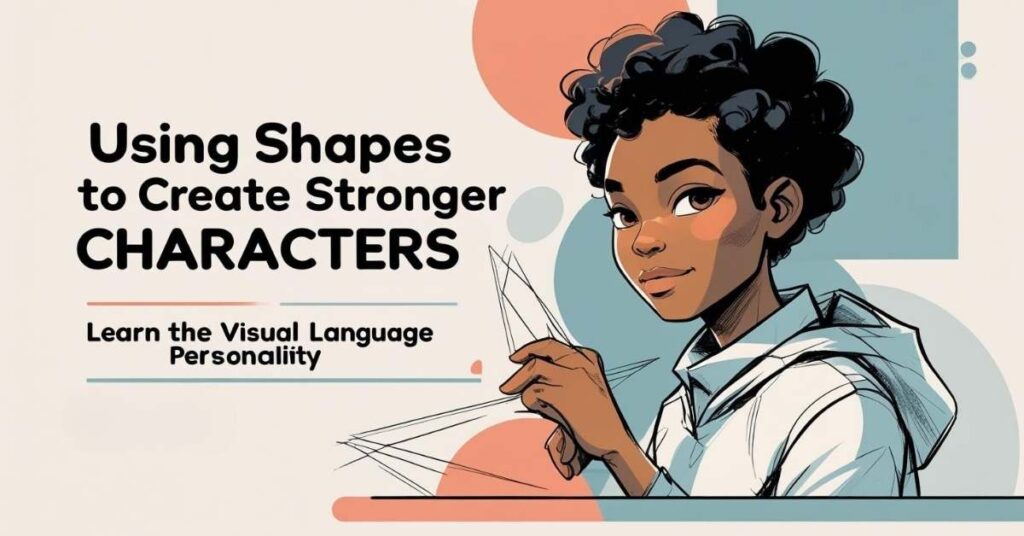Why Shapes Matter in Character Design
Before a viewer knows anything about your character—before they talk, move, or smile—they see the shape. That’s why professional character designers use something called shape language to give characters instant personality, clarity, and visual power.
Even if your drawings are simple, using basic shapes intentionally can make your characters stand out. And best of all? It’s something beginners can use right away.
What Is Shape Language?
Shape language is the idea that different shapes carry different emotional or narrative meanings. By using those associations in your designs, you can suggest a character’s traits before they say a word.
Here’s a quick breakdown:
- Circles: Soft, friendly, approachable. Great for cute or clumsy characters.
- Squares: Stable, strong, dependable. Good for grounded or tough characters.
- Triangles: Sharp, dynamic, or even dangerous. Perfect for fast, sneaky, or villainous characters.
When you combine or exaggerate these shapes, you can create characters that feel distinct and purposeful—even with just a few lines.
Try This: Design a Character Using Just One Shape
Pick one of the three shape types—circle, square, or triangle. Then design a character whose personality matches that shape.
For example:
- Circle: A bubbly robot who always helps but trips over things.
- Square: A loyal bodyguard made of bricks.
- Triangle: A clever thief who’s always one step ahead.
Focus on silhouette, posture, and proportions. Don’t worry about facial detail or color yet—just let the shape lead.

Mixing Shapes for Depth
Real characters are rarely made of just one shape. But starting with a dominant shape gives your design clarity. You can then mix in others for contrast.
Let’s say your hero is mostly square. Adding circular hands might make them feel more gentle. A triangle tail might add a bit of energy. These combinations can suggest internal conflict, hidden traits, or growth over time.
The key is balance. Don’t overload the design—choose shapes that support the story you want to tell.
Want to see shape transitions in action? Check out Alan Becker’s tutorial on shape tweens to see how simple forms can shift with rhythm and emotion. It’s a great primer for visualizing shape personality in motion.
Look Around: Shape Language in Animation
Once you know about shape language, you’ll start seeing it everywhere.
- Round characters often feel warm and safe.
- Square-based characters feel grounded and dependable.
- Sharp shapes convey danger or energy—even if the character never speaks.
These aren’t accidents—they’re visual shortcuts that help the audience connect immediately.

Final Thought
Using shape language is one of the fastest ways to improve your character designs. It’s simple, visual, and effective—even if you’re just starting out. Next time you sketch a character, don’t ask “how do I draw this?” Ask instead, “what shape tells their story?”
Source Material
- Character Design Basics – Bloop Animation (affiliate link)
- The Beginner’s Guide to Character Design – Concept Art Empire
- Shape Tweens Tutorial – YouTube (Alan Becker)


























